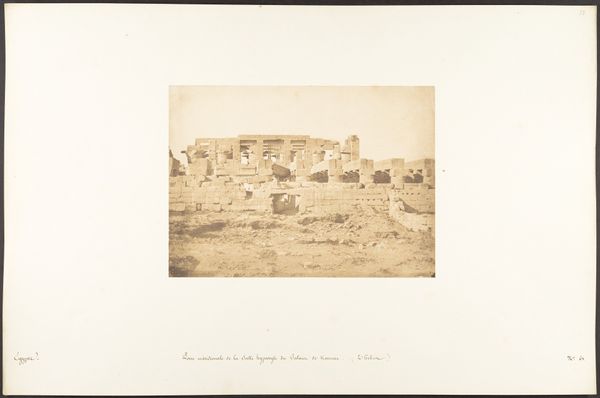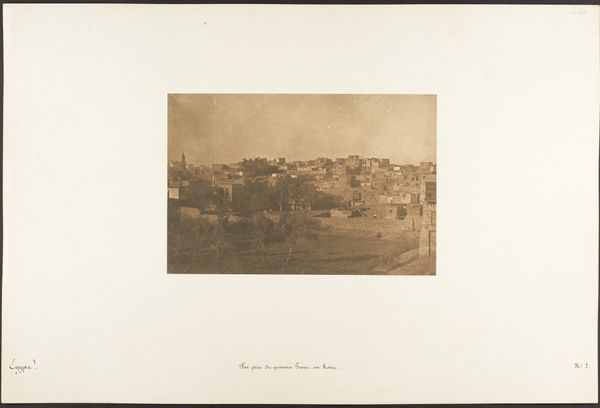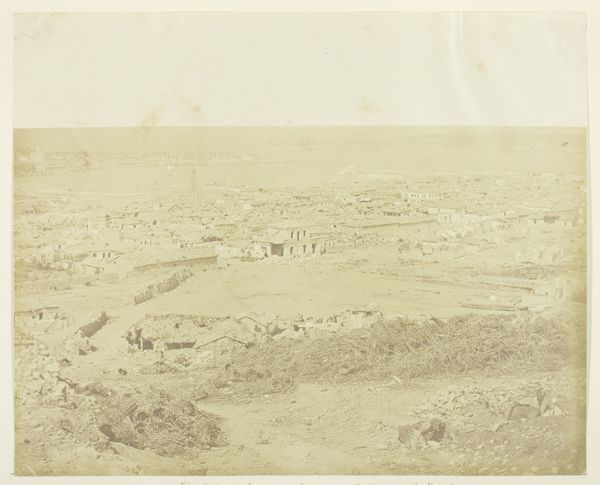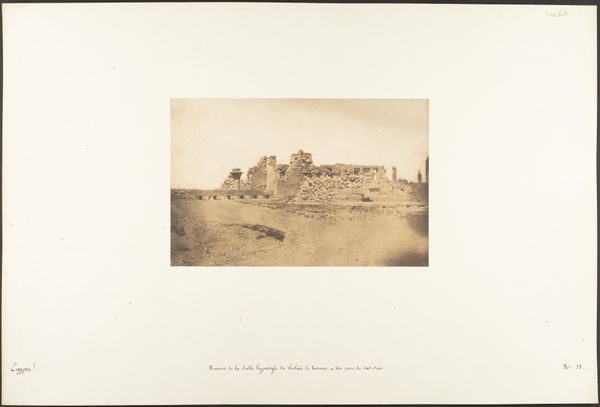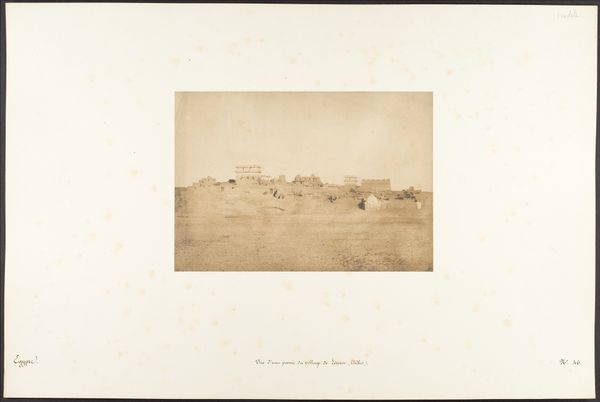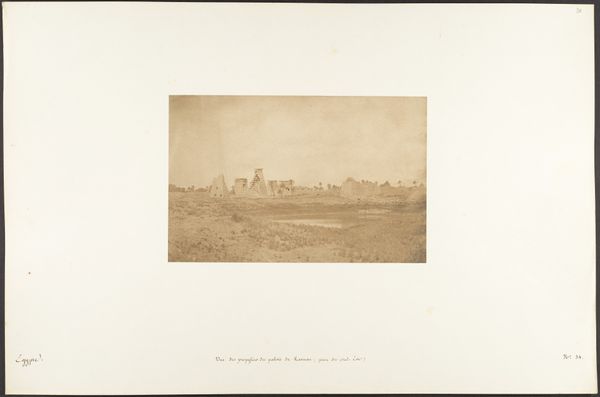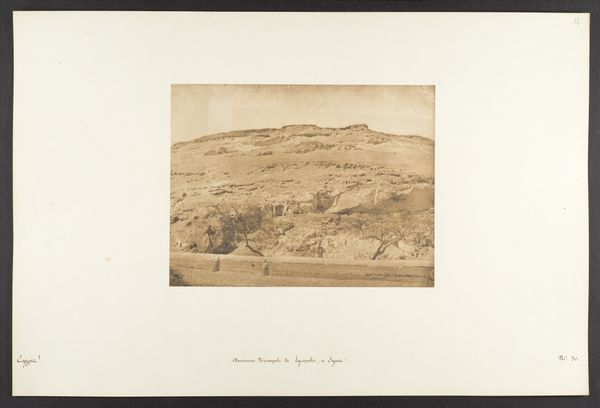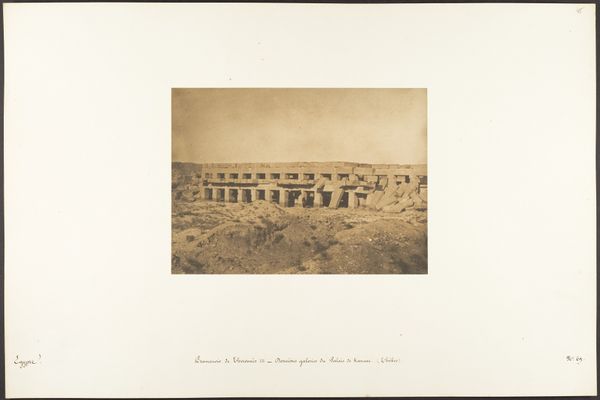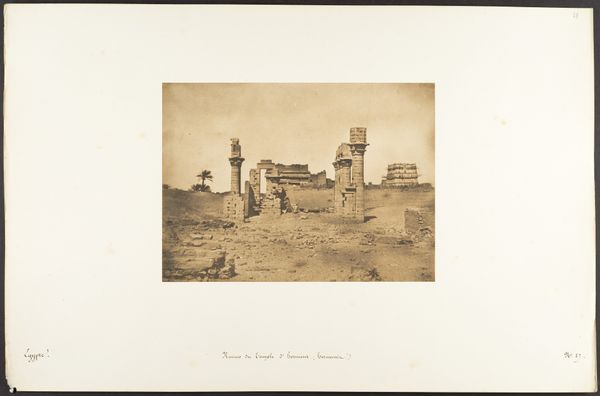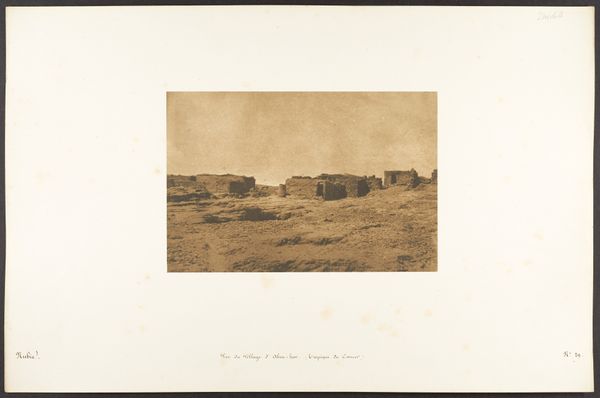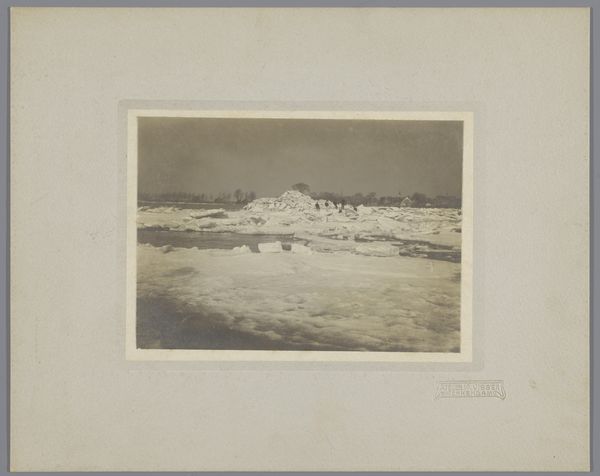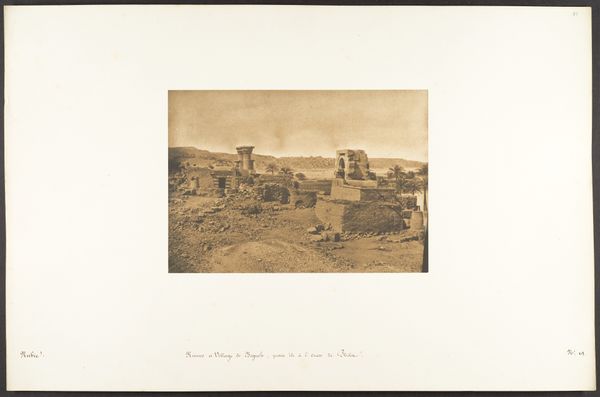
photography, albumen-print
#
ancient-egyptian-art
#
tonal
#
photography
#
romanticism
#
orientalism
#
cityscape
#
albumen-print
Dimensions: Image: 6 9/16 × 8 9/16 in. (16.7 × 21.7 cm) Mount: 12 5/16 × 18 11/16 in. (31.2 × 47.5 cm)
Copyright: Public Domain
Curator: This is Maxime Du Camp’s "Vue générale du Cimetière de Siout," taken between 1849 and 1850. It's an albumen print, part of a larger project documenting Egypt during that period. Editor: My immediate response is a kind of serene melancholy. The tonal range is so limited, it feels like looking at a faded memory, almost like something out of a dream, reinforcing a sense of stillness and eternity fitting for a graveyard scene. Curator: Exactly. Du Camp was working at a time of immense colonial interest in Egypt. These photographs, intended for a European audience, contributed to the construction of Egypt as this timeless, almost biblical landscape, reinforcing certain power dynamics. The "Orientalist" lens is inescapable here, both politically and aesthetically. Editor: And we see that so clearly in the symbolism. The dome shapes, recurring throughout the composition, are visual anchors. In many traditions, the dome symbolizes the heavens, the infinite. This image, through its repetition of this symbolic form, subtly speaks to ideas about death, afterlife, and the soul's journey. It is an almost insistent visual prayer. Curator: Interesting point. I also consider that Du Camp, though working with new photographic technology, consciously evoked Romantic aesthetics through the print's warm tones and composition. By doing this, the artist situates the images within a specific cultural narrative, constructing Siout and its cemetery in alignment with European expectations of the "Orient." Editor: But does the artist not reveal an element of truth? Cemeteries, across cultures, serve as visual reminders of shared mortality and perhaps even continuity of identity over long expanses of time. I see an almost optimistic aspect, too, in the fact that this space is actively in use, woven right into the living cityscape. Curator: I agree; even in framing Siout within an Orientalist perspective, Du Camp inadvertently captures the integration of death into daily life, an openness not always seen in Western societies. We still see how that perspective shifts over time and how it influences meaning making. Editor: Looking at Du Camp’s image allows us to reflect on the cultural coding of visual language and symbolism through this sepia lens. Curator: Ultimately, these photographs are historical artifacts laden with social and political meaning, reminding us that what we see is never simply a straightforward representation of reality, but also, often, it is about cultural history.
Comments
No comments
Be the first to comment and join the conversation on the ultimate creative platform.
